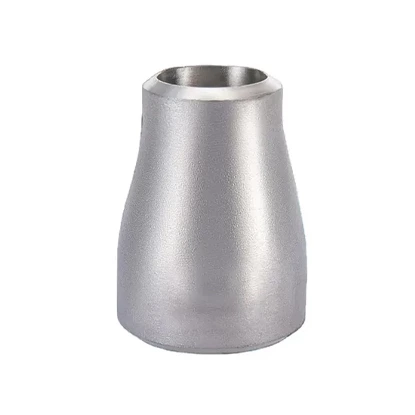What Is A Standard Concentric Reducer?
Standard carbon steel concentric reducer play a critical role in piping systems, particularly when connecting pipes of varying diameters. Their concentric design ensures smoother fluid flow at the joint, reducing pressure loss and fluid turbulence. Due to their excellent performance, standard concentric reducers are widely used in industries such as oil, gas, chemicals, and power generation, and are an indispensable component of efficient fluid transportation systems.
What is a standard concentric reducer?
A standard concentric reducer is a pipe fitting used to connect pipes of varying diameters. Its unique feature is that the two ends of the pipe at the joint remain concentric, meaning their central axes align. Compared to other types of reducers, concentric reducers provide a smoother flow transition, avoiding the turbulence and disturbances caused by sudden changes in pipe diameter. This design ensures a more uniform flow through the piping system, reducing energy loss and pressure fluctuations.
Standard concentric reducers are commonly used to connect two pipes of varying diameters, such as a smaller branch pipe to a larger main pipe. They ensure more stable fluid flow and are particularly suitable for high-flow, large-scale fluid transportation systems. Generally, standard clamp reducer are more suitable for high-pressure, corrosive environments.
Structural Features
Standard con reducer have several significant structural features that give them unique advantages in fluid transportation systems.
> Streamlined Design: Because the two ends of the pipe remain concentric, fluid flows more smoothly through the pipe connection, reducing turbulence and pressure loss. This effect is particularly significant in high-speed flow environments.
> Even Transition: The gradual transition design of the pipe transition section ensures balanced flow rate and pressure when the fluid passes through pipes of different diameters, thus avoiding fluid disturbance and energy loss caused by sudden changes in pipe diameter.
> Corrosion-Resistant Material Design: Especially in industries such as the chemical and petroleum industries, which often transport highly corrosive fluids, con reducer sch 40 made of corrosion-resistant materials such as stainless steel and carbon steel can effectively extend their service life and reduce maintenance costs.
> Diverse Specifications and Sizes: Standard concentric reducers can be selected in various diameters, lengths, and thicknesses to ensure a perfect fit in different piping systems.
Standard Concentric Reducers Specifications
The design and manufacture of standard concentric reducers must comply with relevant industry specifications and standards. Common specifications include ASME B16.9 and ANSI B16.28, which define the dimensions, materials, manufacturing processes, and inspection criteria for concentric reducers. In practical applications, when using standard concentric reducers, compliance with these specifications is crucial to ensure quality and safety.
According to the ASME B16.9 specification, the dimensions, pressure ratings, materials, and tolerances of concentric bell reducer are detailed. This specification applies to concentric reducers made of common materials such as carbon steel and stainless steel, ensuring they can withstand the specified operating pressures and temperatures. Manufacturers are also required to conduct necessary quality control and testing to ensure that the performance of the concentric reducers meets the standard requirements.
When using standard concentric reducers, it is important to select the appropriate standard concentric eccentric reducer based on the specific application and fluid properties, and ensure that it complies with relevant standards to ensure the stable operation of the piping system.
Choosing the Right Concentric Reducer for Your Application
When selecting the right standard concentric pipe fitting, consider the operating pressure and temperature of the piping system. Choose the appropriate material, such as stainless steel or carbon steel, based on the fluid properties (such as corrosiveness and fluidity) and the operating environment of the piping. Choose the appropriate reduction ratio based on the diameter differences of the connecting pipes to ensure smooth fluid transfer and minimize energy loss.
In addition to these basic technical parameters, it's also important to consider the ease of installation and maintenance of the pipes. Choosing the appropriate specifications and connection method based on the complexity of the piping system and application requirements can improve installation efficiency and reduce ongoing maintenance costs. By comprehensively considering these factors, you can ensure that the selected standard concentric pipe fittings performs optimally in the piping system.
Conclusion
Due to their superior fluidity, corrosion resistance, and high strength, standard concentric reducers have become indispensable connectors in many industrial piping systems. Choosing standard concentric reducers that meet industry specifications ensures smooth fluid transfer, minimizes energy loss, and improves overall system efficiency. In different application scenarios, the right concentric piping provides greater stability and reliability, making it a critical component for the long-term, safe operation of the piping system.
